EUROPE
The Critical Dictionary on Borders is finally available online!
November 2022Published in paper format in 2020, this major publication, to which the MOT contributed, is finally available online.
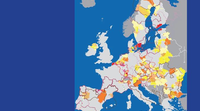
Published in paper format in 2020, this major publication, to which the MOT contributed, is finally available online.
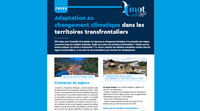
The environment knows no borders, and neither does the climate!
As a further step towards the construction of the European electricity network, a new 190 km EHV line, entirely underground, is being built between Savoy and Piedmont. It will increase the electricity exchange capacity between France and Italy by 40%.
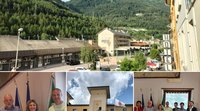
The summer of 2022 marked the launch of two parallel missions for the MOT concerning the territory of the Hautes Vallées Conference (CHAV) at two different territorial levels.
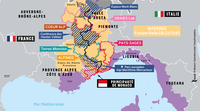
This strategy, adopted by the Region on June 24th, 2022, takes place in the context of strengthened cooperation between France and Italy since the signing of the Quirinal Treaty at the end of 2021, as well as the historical links with the Principality of Monaco

On July 19th, three agreements on civil security and border security were signed between the prefecture of Savoie and that of Turin.

Sandro Gozi, MEP, Jean de Béthune, President of the Lille-Kortrijk-Tournai Eurometropolis, and Christoph Schnaudigel, President of the PAMINA Eurodistrict, talk to us about governance – a crucial subject at the centre of the second day of the Borders Forum. Register now as places are limited! You can also access the event's press kit.
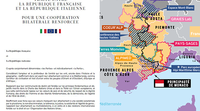
Cross-border co-operation was at the heart of the first of the four meetings devoted to the advances of the Quirinal Treaty. This bilateral treaty between France and Italy was signed by the two countries on 26 November last year.

During this sequence programmed on 8 April as part of the Banque des Territoires and its Hub’s "Europe and Territories" breakfast shows, Jean Peyrony, the MOT’s Director-General, highlighted the major challenges of cross-border cooperation :

On 24-25 March 2022, at the invitation of the Nice Côte d’Azur Metropolis, the MOT had the pleasure of facilitating a Franco-Italian citizens’ forum against a very positive backdrop: the start of the European Year of Youth, the publication of the findings of the Conference on the Future of Europe, France’s presidency of the EU Council and the recent signing of the Quirinal Treaty between the two countries’ governments.
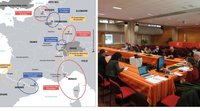
This autumn, and for the second consecutive year, the MOT organised nine “territorial meetings”, so as to keep in close contact with the members of its network, and involve them in preparing its annual programme. Held successively in Besançon, Strasbourg, Lille, Annemasse, Charleville-Mézières, Nice, Urrugne, Perpignan and Metz, both virtually and in person, the meetings brought together close to 200 participants in total.

On the eve of France’s presidency of the EU, the French President, Emmanuel Macron, and the head of the Italian government, Mario Draghi, have signed in Rome a bilateral cooperation treaty, the “Quirinal Treaty”. Sixty years after the signature of the Franco-German Élysée Treaty, this “friendship pact” is historical and marks the desire, at the highest level of state, to advance Franco-Italian cross-border cooperation.
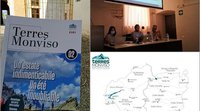
Continuing a collaboration going back 30 years, the territories located south of Monte Viso (3,841 metres), the iconic mountain in the Southern Alps, are structuring their cooperation within the framework of an integrated territorial plan supported by the ALCOTRA programme, known as “Terres Monviso”.

On 5 November 2021, the MOT team had the pleasure of hosting the partners of the integrated territorial plan known as GraiesLab – Active And Innovative Rural Generations – in their offices for a work meeting.

Following its adoption at its first reading in the Senate on 21 July 2021, the 3DS bill (standing for “differentiation, decentralisation, deconcentration and various measures to simplify local public action”) will be examined under a fast-track procedure in the Assemblée Nationale, in France, from the beginning of December. Taking on a number of the proposals put forward by the MOT, the senators adopted a series of amendments relating to cross-border issues.

In anticipation of the reading of the 4D bill in Parliament, the MOT, on behalf of its network, has sent to the co-rapporteurs of the Senate’s Law Commission on this legislation proposed amendments aimed at strengthening its cross-border component.

The “4D” bill was presented during the Council of Ministers’ session on 12 May. It will be subject to an accelerated parliamentary procedure, and its reading in the Senate is scheduled for July.


These meetings were held on 22 April 2021, organised by the ANCT, with the Minister Jacqueline Gourault and Minister of State Joël Giraud in attendance. All beneficiary towns were invited, and examples of territory projects were presented. Among these, several border towns were highlighted, including Saint-Jean de Maurienne and its valley in Savoie, Bouzonville and Sierck-les-Bains in Moselle, along with Hirson and the Thiérache in Aisne.
Funded by the Interreg programme Alcotra, the "PROSANTE" project is dedicated to the creation of a cross-border healthcare network linking the hospitals in Briançon and Susa on the Franco-Italian border.

In October 2020, the MOT was tasked by the National Agency for Territorial Cohesion and the Banque des Territoires as an “action partner” in the national programme “Small Towns of Tomorrow”.

Since 31 January 2021, anyone entering France, including from other European countries, must be in possession of a negative Covid test obtained within the previous 72 hours. However, this obligation does not apply to the inhabitants of cross-border living areas (for journeys lasting less than 24 hours) or to cross-border workers.

The first Franco-Italian accelerator has just been set up. Its aim is to help French and Italian SMEs to work together to grow internationally.

Mountain areas represent over 40% of France’s borders. Among France’s mountain ranges, three of them are located in border regions: the Jura, the Pyrenees and the Alps. This new brochure sets out their common cross-border issues and challenges, while also highlighting concrete cross-border projects.
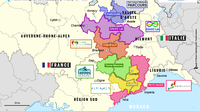
On 17 September, the concluding webinar of the Europ’Act capitalisation project entitled “What prospects for Franco-Italian cross-border cooperation initiatives in the Provence-Alpes-Côte d’Azur Region?” brought together more than 150 people. Organised by the Sud Region and run by the MOT, it aimed to take stock of six years of cooperation initiatives and to outline the Interreg programme for 2021-2027.